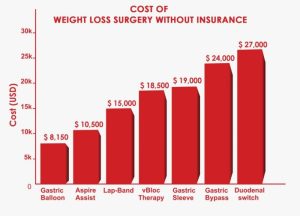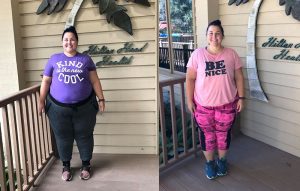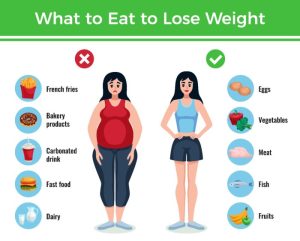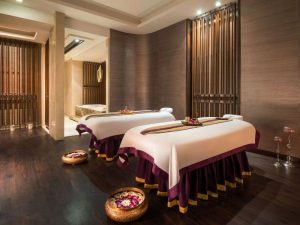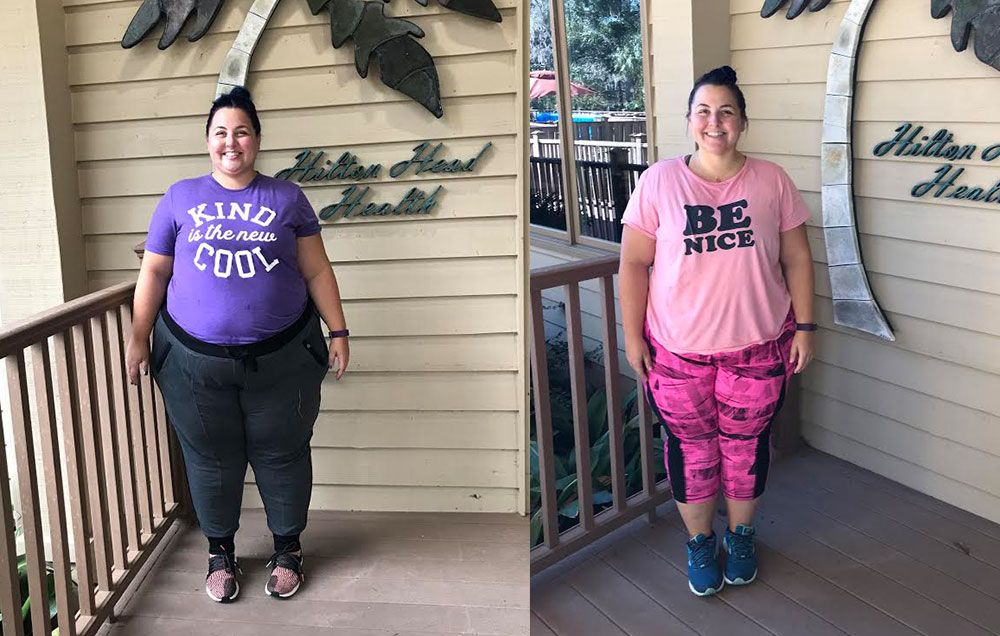
Defining “Fat Farms” and Their Services
The term “fat farm,” while somewhat outdated and potentially insensitive, generally refers to residential weight-loss programs offered at specialized facilities. These programs typically provide a structured environment designed to facilitate significant weight loss through a combination of dietary changes, exercise, and often, behavioral therapy or counseling. It’s important to note that the term is now largely replaced by more modern and inclusive names like “weight-loss retreats” or “wellness centers.”Weight-loss programs at these facilities vary significantly in their approach and intensity.
The programs are usually more comprehensive than simple diet plans or gym memberships, offering a holistic approach to weight management. The overall goal is to not just help individuals lose weight but also to provide them with the tools and support necessary to maintain a healthier lifestyle long-term.
Types of Weight-Loss Programs
Residential weight-loss programs offer a range of approaches to weight management. Some focus heavily on medically supervised diets, carefully controlling calorie intake and macronutrient ratios. Others emphasize rigorous physical activity, including personal training sessions, group fitness classes, and outdoor activities. Many programs integrate both dietary and exercise components, often incorporating elements of behavioral therapy to address underlying emotional or psychological factors contributing to weight gain.
Some facilities may specialize in particular dietary approaches, such as low-carbohydrate, low-fat, or plant-based diets. The choice of program depends on individual needs and preferences.
Program Duration
The length of stay at a weight-loss facility varies considerably depending on the program’s intensity and the individual’s goals. Shorter programs, lasting a week or two, may focus on jumpstarting weight loss and providing initial guidance on lifestyle changes. Longer programs, extending for several weeks or even months, allow for more in-depth behavioral modification, nutritional education, and fitness training.
The extended duration facilitates sustained habit changes and long-term weight management.
Program Features Across Price Points
The cost of a residential weight-loss program is highly variable, depending on the program’s length, location, amenities, and the level of medical supervision provided. Generally, more expensive programs offer a higher level of personalized attention, more comprehensive services, and a more luxurious setting.
| Price Point | Diet | Exercise | Therapy | Amenities |
|---|---|---|---|---|
| Budget (e.g., $2,000 – $5,000 for a week) | Structured meal plans, group nutrition education | Group fitness classes, basic gym access | Limited group therapy sessions | Shared rooms, basic facilities |
| Mid-Range (e.g., $5,000 – $15,000 for a week) | Personalized meal plans, individual nutrition consultations | Individual personal training, variety of fitness classes | Individual and group therapy sessions | Private or semi-private rooms, spa access |
| Luxury (e.g., $15,000+ for a week) | Chef-prepared meals, customized dietary plans, extensive nutritional support | Private training, specialized fitness programs, access to advanced equipment | Extensive individual therapy, potentially including specialized treatments | Luxurious accommodations, full-service spa, additional wellness services |
Price Ranges and Examples
The cost of attending a fat farm, or weight-loss resort, varies significantly depending on several factors including location, program length, amenities offered, and the level of medical supervision provided. Generally, these programs are a considerable investment, reflecting the intensive nature of the services provided. Understanding the price structure is crucial for potential clients to make informed decisions.
Factors influencing the overall cost include the duration of the stay (ranging from a week to several months), the type of accommodation (private rooms versus shared rooms), the inclusivity of the program (all meals and activities included versus a la carte options), and the level of medical support offered (basic health monitoring versus comprehensive medical oversight). Luxury resorts often command higher prices than more basic programs, reflecting the higher quality of amenities and personalized services.
Program Costs and Examples
The price of a fat farm program can range widely. A basic program focusing on diet and exercise might cost between $2,000 and $5,000 per week, while a luxury program offering extensive medical supervision, spa treatments, and personalized fitness plans can easily exceed $10,000 per week. Longer programs naturally cost more; a month-long stay could range from $8,000 to $40,000 or more depending on the program’s features and location.
For example, consider a hypothetical seven-day program at a mid-range facility. The cost breakdown might look like this: accommodation (private room)
-$1,400; meals (three nutritious meals daily, plus snacks)
-$700; group fitness classes and personal training sessions – $500; wellness activities (yoga, meditation, etc.)
-$200; medical monitoring and consultations – $200. This totals $3,000 for the week. This is a representative example and costs can vary considerably.
Cost-Effectiveness Compared to Other Weight Loss Options
Comparing the cost-effectiveness of fat farms to other weight-loss options requires careful consideration. While fat farms represent a significant upfront investment, they often provide a structured and intensive environment conducive to weight loss. This can lead to quicker results compared to self-guided weight loss programs. However, the long-term sustainability of the weight loss achieved at a fat farm needs to be carefully considered.
Many individuals find that the cost-effectiveness is increased by the long-term health benefits and improved lifestyle habits adopted.
Other weight loss options such as individual therapy with a nutritionist, personal training, or joining a gym are significantly less expensive on a weekly or monthly basis. However, these options require more self-discipline and may not provide the same level of support and structure as a fat farm. The ultimate cost-effectiveness depends on individual needs, preferences, and long-term goals.
Price Ranges by Program Type and Length
| Program Type | Length of Stay | Cost per Week (USD) | Cost per Month (USD) |
|---|---|---|---|
| Basic Program | 1 Week | $2,000 – $5,000 | $8,000 – $20,000 |
| Mid-Range Program | 1 Week | $3,000 – $8,000 | $12,000 – $32,000 |
| Luxury Program | 1 Week | $8,000 – $15,000+ | $32,000 – $60,000+ |
| Medical Program (with extensive medical supervision) | 1 Week | $5,000 – $12,000+ | $20,000 – $48,000+ |
Financial Aspects and Payment Options

The cost of a fat farm program is a significant investment, and understanding the financial aspects is crucial before committing. Many factors influence the overall price, including program length, location, amenities, and the level of personalized care offered. Fortunately, several payment options and financial considerations are available to help prospective clients manage the costs effectively.The financial arrangements for fat farm programs vary considerably.
While some programs require full upfront payment, many offer flexible payment plans to spread the cost over several months. These plans typically involve a deposit to secure the spot, followed by monthly installments. Interest rates and specific terms will vary depending on the facility and the chosen payment plan. Some facilities may also work with third-party financing companies to offer more extensive payment options.
It is advisable to discuss the available plans thoroughly with the facility to find the most suitable arrangement.
Financing Options and Payment Plans
Fat farms often provide a range of payment options to accommodate different budgets. These may include single lump-sum payments, installment plans, and in some cases, financing through third-party lenders. Installment plans generally involve a down payment followed by regular monthly payments over a pre-agreed period. The terms and conditions, including any interest charges, will be clearly Artikeld in the contract.
Third-party financing might involve applying for a loan specifically for the fat farm program, which may offer more flexible repayment terms but will likely incur interest.
Tax Implications of Fat Farm Programs
The tax deductibility of fat farm programs is complex and depends heavily on individual circumstances and the specific nature of the program. Generally, expenses related to medical treatment are more likely to be tax-deductible than those focused solely on weight loss. If the program involves medically supervised weight loss, such as a program overseen by a physician and including medical monitoring, portions of the cost may be considered eligible for tax deductions.
However, this requires meticulous record-keeping of medical expenses and consultations with a tax professional to determine eligibility. Consulting a tax advisor is strongly recommended to assess potential tax implications in individual cases. They can provide personalized advice based on your specific situation and applicable tax laws.
Refund Policies and Cancellation Fees
Refund policies and cancellation fees vary widely among fat farm programs. Some facilities may offer full or partial refunds with sufficient advance notice, while others may impose significant cancellation fees, especially if cancellation is made close to the program’s start date. The specific terms are usually Artikeld in the program’s contract, so it’s essential to read this document carefully before signing.
It’s advisable to understand the cancellation policy thoroughly, including the timeframes for cancellation and the associated financial penalties, to avoid unexpected costs. Some facilities may offer a more flexible cancellation policy in exceptional circumstances, such as documented medical emergencies.
Questions to Ask About Financing
Before committing to a fat farm program, it is crucial to clarify the financial aspects thoroughly. Here are some essential questions to ask:
- What payment options are available (e.g., lump sum, installment plan, financing)?
- What are the terms and conditions of each payment plan, including interest rates and fees?
- What is the facility’s refund policy, and what are the cancellation fees?
- Are there any hidden costs or additional fees not included in the initial price quote?
- What is the process for disputing charges or addressing billing errors?
- What documentation will be provided for tax purposes?
Illustrative Examples of Program Costs and Inclusions

Understanding the price variations in weight-loss programs requires examining different program types and their offerings. The cost significantly depends on the location, duration, amenities, and the level of personalized care provided. Below are examples illustrating the cost spectrum.
High-End Fat Farm Program: The Serenity Retreat
The Serenity Retreat offers an ultra-luxury experience encompassing a holistic approach to weight loss. This 28-day program, nestled in a secluded Tuscan villa, combines personalized nutrition plans with daily yoga, Pilates, and private training sessions with certified fitness experts. Guests enjoy gourmet, healthy meals prepared by a Michelin-starred chef, luxurious spa treatments (including massages and facials), and access to a dedicated concierge service.
The program also includes psychological counseling sessions to address emotional eating habits. The overall cost for this program is approximately $35,000, inclusive of all meals, activities, and accommodation in a private suite. Imagine a sun-drenched villa with breathtaking views, where each day begins with a gentle yoga session followed by a nutritious and delicious breakfast. Afternoons are spent exploring the picturesque Tuscan countryside or indulging in rejuvenating spa treatments, concluding with a gourmet dinner under the stars.
Mid-Range Fat Farm Program: The Wellness Haven
The Wellness Haven provides a balanced approach to weight loss within a comfortable and supportive environment. This 14-day program, located in a modern resort setting in Colorado, features group fitness classes (yoga, Zumba, hiking), nutritional workshops led by registered dietitians, and access to a well-equipped gym. Participants receive a personalized meal plan, but meals are served buffet-style. Individual counseling sessions are available at an additional cost.
The cost for this program is around $7,000, inclusive of accommodation in a shared room, all fitness classes, and nutritional workshops. Picture a vibrant, active atmosphere where you’re surrounded by like-minded individuals. Days are filled with invigorating group fitness classes, insightful nutritional workshops, and opportunities for hiking and exploring the stunning Colorado landscape. Evenings are spent relaxing and connecting with others in a comfortable and supportive setting.
Budget-Friendly Fat Farm Program: The Healthy Living Center
The Healthy Living Center focuses on providing accessible weight-loss support through a structured program. This 7-day program, located in a comfortable retreat center in rural Pennsylvania, emphasizes group exercise classes (aerobics, strength training), group nutrition education sessions, and access to a basic gym. Meals are simple but healthy and prepared on-site. Individual consultations are not included. The total cost is approximately $1,500, encompassing accommodation in a shared dorm-style room, all group classes, and meals.
Imagine a simple, functional space where the focus is on achieving your weight-loss goals through group support and structured activities. Days are filled with energetic group exercise classes, informative nutrition sessions, and opportunities for connecting with others working towards similar goals. The atmosphere is friendly and supportive, fostering a sense of community.
Visual Comparison of Value Propositions
Imagine three distinct visual representations. The first, representing The Serenity Retreat, is a luxurious, detailed illustration of a Tuscan villa with a swimming pool, overlooking rolling hills. The image is rich with vibrant colors and details, suggesting opulence and personalized attention. The second, illustrating The Wellness Haven, shows a modern, active resort with people participating in various fitness activities, surrounded by the beauty of the Colorado mountains.
The image conveys a sense of balance, community, and a healthy lifestyle. The third, depicting The Healthy Living Center, presents a clean, functional retreat center with individuals participating in group exercise classes in a bright, inviting setting. This image emphasizes affordability and accessibility, focusing on the practicality and effectiveness of the program. The contrast in these images clearly highlights the differences in cost and the corresponding level of luxury and personalized service offered by each program.
